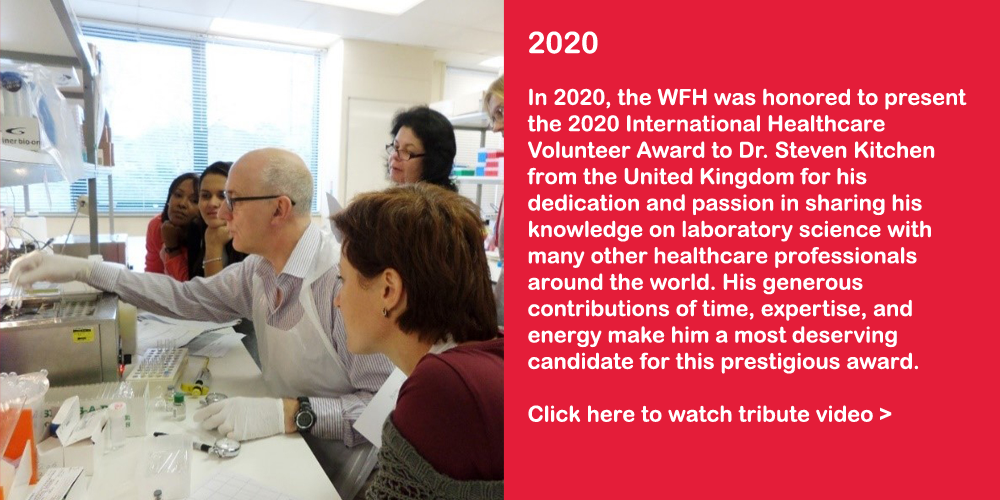Data is of critical importance to advocacy, because without it, the significant burden of disease can’t be convincingly communicated to healthcare decision makers. The team at the Yaoundé HTC was awarded a grant through Research Support Program (RSP) of the World Bleeding Disorders Registry (WBDR)—the only global registry collecting standardized clinical data on PWH and people with von Willebrand disease (VWD). This grant allowed the team to collect and analyze new and existing data easily and systematically.
The project was implemented in Cameroon in December 2020 and completed in November 2022. The research aimed to study the epidemiological, clinical, and radiological profile of joint disease in PWH in Cameroon. The Yaoundé HTC team did the assessments using the Hemophilia Joint Health Score (HJHS) method, which measures joint health in the domain of body structure and function for the joints most affected by bleeding in hemophilia. All data were then entered in the WBDR. Radiological and ultrasound assessments were also done for the elbows, knees and ankles of PWH.
Using the WBDR to capture and analyze the data will be instrumental in helping us advocate for people with bleeding disorders (PWBDs) in Cameroon.
—Ndoumba Annick, MD, Yaoundé hemophilia treatment centre (HTC)
The HTC Yaoundé team recruited 38 PWHs and examined 228 joints. The average age of the PWH was 16 years old, and ranged from three to 42 years old. The results of HJHS showed that 84% of PWH had damaged joints. Overall, the most affected joints were the knees (48% of affected joints), followed by the elbow (32% of affected joints) and ankle (20% of affect joints). In addition, the radiographic findings showed an enlargement of the epiphysis in 55% of joints. The ultrasound showed that 45% of joints had hemosiderin deposition; fluid effusion was found in 35%; and 32% of joints had bone erosion. In short, the study convincingly proved that most PWH in Cameroon have a significant degree of joint damage—starting as young as three years old.

Thanks to the funding from the WBDR RSP, and using the WBDR as a tool, the Yaoundé HTC team was able to demonstrate the significant impact of sub-optimal treatment on joint health on PWH in Cameroon. Having the data collected in a prospective manner and stored in a secure database provides the HTC—and the national member organization (NMO)—with evidence-based support for initiatives that can improve care. This is the first study of its kind for Cameroon and will be used as a model for other countries with similar challenges.
To find out more about the WFH WBDR Research Support Program, please click here. To find out more about the WBDR, click here.












